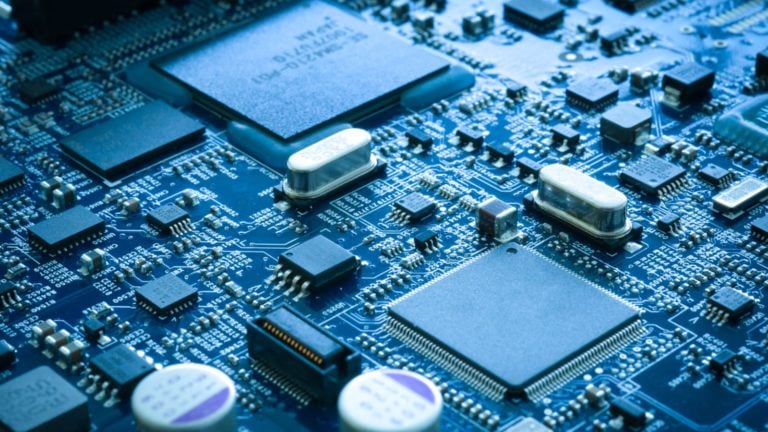Semiconductor stocks rose over the weekend after details emerged on how the CHIPS and Science Act will be allocated.
According to the Department of Commerce, $28 billion will support manufacturing of advanced chips, $10 billion into making current chips, and $11 billion into research and development. Funding documents will be complete in February.
Among the group of chip stocks, Qualcomm (NASDAQ:QCOM), Texas Instruments (NASDAQ:TXN), Intel (NASDAQ:INTC), Nvidia (NASDAQ:NVDA), Micron Technology (NASDAQ:MU) and Taiwan Semiconductor (NYSE:TSM) all were in the red on Tuesday morning. It seems this comes alongside a drop in the major indices.
What’s Going on With Chip Stocks?
The aim of the legislation is to increase semiconductor production in the U.S. in the face of growing threats from China. Semiconductor manufacturing has been moving offshore for decades, attracted by lower labor costs and relaxed environmental standards.
Meanwhile, Taiwan has become a primary chip supplier, thanks to Taiwan Semiconductor’s success with EUV (extreme ultraviolet) technology that brings circuit lines within a few nanometers of one another. Geopolitical concerns now impact both the U.S. and Taiwan Semi, which is building a new plant in Arizona backed in part by CHIPS Act subsidies.
Skeptics, however, question whether the act can be effective if its aim is to reduce dependence on China. They cite China’s dominance in low-end silicon and its growing use of standards-based designs. China has criticized the law, saying it interferes with its efforts to become self-sufficient. The U.S. has also moved to restrict the export of artificial intelligence chips to China, although Nvidia will be allowed to continue development efforts there.
Intel has been pushing especially hard for the CHIPS Act and is now planning to break ground on five new plants in Ohio. Intel CEO Pat Gelsinger has focused on building Intel as a foundry for other designers, as its designs lose share to those of Advanced Micro Devices (NASDAQ:AMD) and Nvidia.
What Happens Next?
Everyone understands Moore’s Law, the idea that chips get faster over time. What’s at stake here is what I call Moore’s Second Law, the idea that manufacturing costs also rise with chip complexity.
The result is that the hardware for making chips requires much more capital and brings less value than the software used for designing chips. As designs get more complex, they cost more to manufacture. That’s why AMD and Nvidia are both worth more than Intel.
It will take years before Intel’s foundry investments, and thus the CHIPS Act itself, can bear fruit. Many investors are looking beyond microprocessors for growth, to the communications chips of Qualcomm, the memory chips of Micron, and the digital signal processors of Texas Instruments.
At the time of publication, Dana Blankenhorn directly owned shares in INTC, AMD, NVDA, and TSM. The opinions expressed in this article are those of the writer, subject to the InvestorPlace.com Publishing Guidelines.

